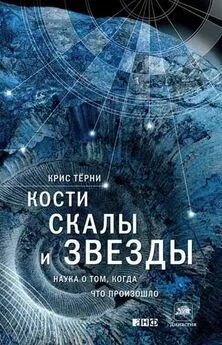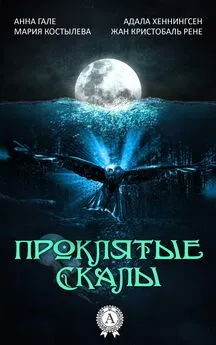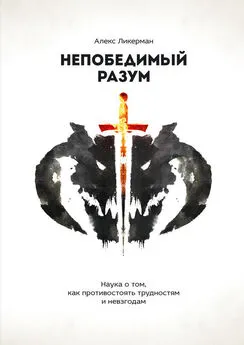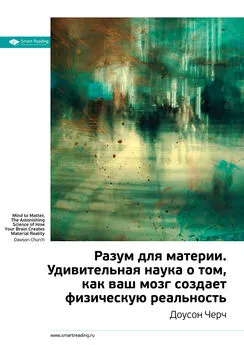Крис Терни - Кости, скалы и звезды. Наука о том, когда что произошло
- Название:Кости, скалы и звезды. Наука о том, когда что произошло
- Автор:
- Жанр:
- Издательство:Альпина нон-фикшн
- Год:2011
- Город:Москва
- ISBN:978-5-91671-087-8
- Рейтинг:
- Избранное:Добавить в избранное
-
Отзывы:
-
Ваша оценка:
Крис Терни - Кости, скалы и звезды. Наука о том, когда что произошло краткое содержание
Кости, скалы и звезды. Наука о том, когда что произошло - читать онлайн бесплатно ознакомительный отрывок
Интервал:
Закладка:
• Hammer, C.U., Kurat, G., Hoppe, P., Grum, W. and Clausen, H.B. (2003) Thera eruption date 1645 BC confirmed by new ice core data? Proceedings of SCIEM2000 (Synchronisation in the Eastern Mediterranean in the 2nd Millenium BC).
• LaMar che, V.C. and Hirschboeck, K.K. (1984) Frost rings in trees as records of major volcanic activities. Nature, 307, 121–126.
• Manning, S.W. (1999) A Test of Time: The Volcano of Thera and the Chronology and History of the Aegean and East Mediterranean in the Mid-second Millennium BC. Oxbow Books, Oxford.
• Manning, S.W., Kromer, B., Kuniholm, P.I. and Newton, M.W. (2001) Anatolian tree rings and a new chronology for the east Mediterranean Bronze-Iron ages. Science, 294, 2532–2535.
• Marinatos, S. (1939) The volcanic destruction of Minoan Crete. Antiquity, 13, 425–439.
• Montelius, O. (1885) Dating the Bronze Age with Special Reference to Scandinavia. K. Vitterhets Historie och Antikvitetsakademien.
• Pearce, N.J.G., Westgate, J.A., Preece, S.J., Eastwood, W.J. and Perkins, W.T. (2004) Identification of Aniakchak (Alaska) tephra in Greenland ice core challenges the 1645 BC date for Minoan eruption of Santorini. Geochemistry, Geophysics, Geosystems, 5, DOI 10.1029/2003GC000672.
• Baillie, M. (2000) Exodus to Arthur. Batsford, London.
• Baillie, M.G.L. (1995) A Slice Through Time: Dendrochronology and Precision Dating. Routledge, London.
• McCafferty, P. and Baillie, M. (2005) The Celtic Gods: Comets in Irish Mythology. Tempus Publishing, Stroud.
• Rigby, E., Symonds, M. and Ward-Thompson, D. (2004) A comet impact in AD 536? Astronomy Geophysics, 45, 1.1–1.4.
• Berger, A. and Loutre, M.F. (1991) Insolation values for the climate of the last 10 million years. Quaternary Science Reviews, 10, 297–318.
• Blunier, T. and Brook, E.J. (2001) Timing of millennial-scale climate change in Antarctica and Greenland during the last glacial period. Science, 291,109–112.
• Dansgaard, W. Johnsen, S.J., Clausen, H.B., Dahl-Jensen, D., Gundestrup, N.S., Hammer, C.U., Hvidberg, C.S., Steffensen, J.P., Sveinbjurnsdottir, A.E., Jouzel, J. and Bond, G. (1993) Evidence for general instability of past climate from a 250-kyr ice-core record. Nature, 364, 218–220.
• EPICA Community Members (2004) Eight glacial cycles from an Antarctic ice core. Nature, 429, 623–628.
• Gribbin, J. and Gribbin, M. (2001) Ice Age. Allen Lane, Penguin Press, London.
• Имбри Дж., Имбри К.П. Тайны ледниковых эпох. — М.: Прогресс, 1988.
• Imbrie, J. Shackleton, N.J., Pisias, N.G., Morley, J.J., Prell, W.L., Martinson, D.G., Hayes, J.D., MacIntyre, A. and Mix, A.C. (1984) The orbital theory of Pleistocene climate: support from a revised chronology of the marine dl80 record. In Milankovitch and Climate, Part 1, ed. by A. Berger, Reidel, Hingham, Massachusetts, 269–305.
• Rohling, E.J. and Palike, H. (2005) Centennial-scale climate cooling with a sudden cold event around 8,200 years ago. Nature, 434, 975–979.
• Walker, M. (2005) Quaternary Dating Methods. John Wiley Sons, Chichester.
• Anderson, A. (2000) Differential reliability of 14C AMS ages of Rattus exulans bone gelatin in south Pacific prehistory. Journal of the Royal Society of New Zealand, 30, 243–261.
• Elias, S.A. (1999) Quaternary biology update, debate continues over the cause of Pleistocene megafauna extinction. Quaternary Times, June, 11.
• Fiedel, S. and Haynes, G. (2004) A premature burial: Comments on Grayson and Meltzer’s ‘Requiem for overkill’. Journal of Archaeological Science, 31,121–131.
• Flannery, T. (1997) The Future Eaters. Reed New Holland, Sydney.
• Flannery, T. (2002) The Eternal Frontier, Vintage, London.
• Guthrie, R.D. (2004) Radiocarbon evidence of mid-Holocene mammoths stranded on an Alaskan Bering Sea island. Nature, 429, 746–749.
• Higham, Т., Anderson, A. and Jacomb, C. (1999) Dating the first New Zealanders: The chronology of Wairau Bar. Antiquity, 73, 420–427.
• Holdaway, R.N. (1996) Arrival of rats in New Zealand. Nature, 384, 225–226.
• Holdaway, R.N. and Jacomb, C. (2000) Rapid extinction of the moas (Aves: Dinornithiformes): Model, test, and implications. Science, 287, 2250–2254.
• Jones, R. (1998) Dating the human colonization of Australia: radiocarbon and luminescence revolutions. Proceedings of the British Academy, 99, 37–65.
• Johnson, C.N. (2002) Determinants of loss of mammal species during the Late Quaternary ‘megafauna’ extinctions: life history and ecology, but not body size. Proceedings of the Royal Society of London B, 269, 2221–2228.
• Jull, A.J.T., Iturralde-Vinent, M., O’Malley, J.M., MacPhee, R.D.E., McDonald, H.G., Martin, P.S., Moody, J. and Rincon, A. (2004) Radiocarbon dating of extinct fauna in the Americas recovered from tar pits. Nuclear Instruments and Methods in Physics Research, B223-4, 668–671.
• Miller, G.H., Fogel, M.L., Magee, J.W., Gagan, M.K., Clarke, S.J. and Johnson, B.J. (2005) Ecosystem collapse in. Pleistocene Australia and a human role in megafaunal extinction. Science, 309, 287–290.
• Miller, G.H., Magee, J.W., Johnson, B.J., Fogel, M.L., Spooner, N.A., McCulloch, M.T. and Ayliffe, L.K. (1999) Pleistocene extinction of Genyomis newtoni: human impact on Australian megafauna. Science, 283, 205–208.
• Roberts, R.G., Jones, R. and Smith, M.A. (1990) Thermo- luminescence dating of a 50,000-year-old human occupation site in northern Australia. Nature, 345,153–156.
• Roberts, R.G., Flannery, T.F., Ayliffe, L.K., Yoshida, H., Olley, J.M., Prideaux, G.J., Laslett, G.M., Baynes, A., Smith, M.A., Jones, R. and Smith, B.L. (2001) New ages for the last Australian megafauna: continent-wide extinction about 46000 years ago. Science, 292,1888–1892.
• Turney, C.S.M., Bird, M.I., Fifield, L.K., Roberts, R.G., Smith, M.A., Dortch, С.E., Grbn, R., Lawson, E., Ayliffe, L.K., Miller, G.H., Dortch, J. and Cresswell, R.G. (2001) Early human occupation at Devil’s Lair, southwestern Australia 50,000 years ago. Quaternary Research, 55, 3-13.
• Tbrney, C.S.M., Kershaw, A.P., Moss, P., Bird, M.I., Fifield, L.K., Cresswell, R.G., Santos, G.M., di Tada, M.L., Hausladen, P.A. and Zhou, Y. (2001) Redating the onset of burning at Lynch’s Crater (North Queensland): Implications for human settlement in Australia. Journal of Quaternary Science, 16, 767–771.
• Willerslev, E., Hansen, A.J., Binladen, J., Brand, T.B., Gilbert, M.T.P., Shapiro, B., Bunce, М., Wiuf, C., Gilichinsky, D.A. and Cooper, A. (2003) Diverse plant and animal genetic records from Holocene and Pleistocene sediments. Science, 300, 791–795.
• Falgueres, С., Bahain, J.J., Yokoyama, Y., Arsuaga, J.L., de Castro, J.M.B., Carbonell, E., Bischoff, J.L. and Dolo, J.M. (1999) Earliest humans in Europe: the age of TD6 Gran Dolina, Atapuerca, Spain. Journal of Human Evolution, 37, 343–352.
• Forth, G. (2005) I lominoids, hairy hominoids and the science of humanity. Anthropology Today, 21, 13–17.
• Grim, R. and Stringer, C.B. (1991) Electron spin resonance dating and the evolution of modern humans. Archaeometry, 33, 153–199.
• Higham, Т., BronkRamsey, C., Karavanic, I., Smith, F.H. and Trinkaus, E. (2006) Revised direct radiocarbon dating of the VindijaGl Upper Paleolithic Neandertals. Proceedings of the National Academy of Sciences, 103, 553–557.
• Huffman, O. R, Zaim, Y., Kappelman, J., Ruez Jr, D.R., de Vos, J., Rizal, Y., Aziz, R and Hertler, C. (2006) Relocation of the 1936 Mojokerto skull discovery site near Periling, East Java. Journal of Human Evolution (in press).
• McDougall, I., Brown, R H. and Fleagle, J.G. (2005) Stratigraphic placement and age of modern humans from Kibish, Ethiopia. Nature, 433, 733–736.
• Mellars, P. (2004) Neanderthals and the modern human colonization of Europe. Nature, 432,461–465.
• Morwood, M.J., Soejono, R.P., Roberts, R.G., Sutikna, Т., Turney, C.S.M., Westaway, К.E., Rink, W.J., Zhao, J.-X., van den Bergh, G.D., Due, R.A., Hobbs, D.R., Moore, M.W., Bird, M.I. and Fifield, L.K. (2004) Archaeology and age of Homo floresiensis, a new hominin from Flores in eastern Indonesia. Nature, 431,1087–1091.
• Morwood, M.J., O’Sullivan, P.B., Aziz, F. and Raza, A. (1998) Fissiontrack ages of stone tools and fossils on the east Indonesian island of Flores. Nature, 392,173–176. Morwood, M.J., O’Sullivan, P.O., Susanto, E.E. and Aziz, F. (2003) Revised age for Mojokerto 1, an early Homo erectus cranium from East Java, Indonesia. Australian Archaeology, 57, 1–4.
• Shipman, P. (2001) The Man Who Found the Missing Link: The Extraordinary Life of Eugnne Dubois. Simon Schuster, New York.
• Stringer, C. (2002) Modern human origins: Progress and prospects. Philosophical Transactions of the Royal Society of London, B357, 563–579.
• Stringer, C. and Andrews, P. (2005) The Complete World of Human Evolution. Thames Hudson, London.
• Swisher III, С.C., Curtis, G.H., Jacob, T., Getty, A.G., Suprijo, A. and Widiasmoro (1994) Age of the earliest known hominids in Java, Indonesia. Science, 263, 1118–1121.
• Swisher III, C.C., Rink, W.J., Antyn, S.C., Schwarcz, H.P., Curtis, G.H., Suprijo, A. and Widiasmoro (1996) Latest Homo erectus of Java: potential contemporaneity with Homo sapiens in southeast Asia. Science, 274, 1870–1874.
• Trinkaus, E., Moldovan, O., Milota, S., Bilgar, A., Sarcina, L., Athreya, S. et al. (2003) An early modern human from the Pestera cu Oase, Romania. Proceedings of the National Academy of Sciences, 100, 11231-11236.
• Vekua, A., Lordkipanidze, D., Rightmire, G.P., Agusti, J., Ferring, R., Maisuradze, G., Mouskhelishvili, A., Nioradze, M., de Leon, M.P., Tappen, М., Tvalchrelidze, M. and Zollikofer, C. (2002) A new skull of early Homo from Dmanisi, Georgia. Science, 297, 85–89.
• Alvarez, L.W., Alvarez, W., Asaro, F. and Michel, H.V. (1980) Extraterrestrial cause for the Cretaceous-Tertiary extinction. Science, 208, 1095–1108.
• Amthor, J.E., Grotzinger, J.P., Schroder, S., Bowring, S.A., Ramezani, J., Martin, M.W. and Matter, A. (2003) Extinction of Cloudina and Namacalathus at the Precambrian-Cambrian boundary in Oman. Geology, 31, 431–434.
• Burnie, D. (2004) The Concise Dinosaur Encyclopedia. Kingfisher, London.
• Cadbury, S. (2000) Terrible Lizard. Owl Books, New York.
• Chen, P.J., Dong, Z.-M. and Zhen, S.-N. (1998) An exceptionally wellpreserved theropod dinosaur from the Yixian Formation of China. Nature, 391, 147–152.
• Frankel, C. (2000) The End of the Dinosaurs. Cambridge University Press, Cambridge.
• Hildebrand, A.R. and Boynton, W.V. (1990) Proximal Cretaceous — Tertiary boundary impact deposits in the Caribbean. Science, 248, 843–847.
• Swisher III, С.C., Grajales-Nishimura, J.M., Montanari, A., Margolis, S.V., Claeys, P., Alvarez, W., Renne, P., Cedillo- Pardo, E., Maurrasse, F.J.-M.R., Curtis, G.H., Smit, J. and McWilliams, M.O. (1992) Coeval 40Ar/ 39Ar ages of 65.0 million years ago from Chicxulub Crater melt rock and Cretaceous — Tertiary boundary tektites. Science, 257, 954–958.
• Venkatesan, T.R., Pande, K. and Gopalan, K. (1993) Did Deccan volcanism pre-date the Cretaceous/Tertiary transition? Earth and Planetary Science Letters, 119, 181–199.
• Burchfield, J.D. (1990) Lord Kelvin and the Age of the Earth. University of Chicago Press, Chicago.
Читать дальшеИнтервал:
Закладка:










